Who's your team's most important player for the second half?
Travis SawchikESPN INSIDER
With the season having advanced just beyond the halfway mark, let's look at the most important player in the second half for all 30 major league clubs. It could be a player at any professional level within his organization. For teams ranging from contenders and to rebuilding clubs, the motivations are different -- from assets they'll want to deal at the trade deadline to players they're hoping to see rebound.
American League
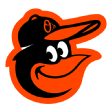 Baltimore Orioles: Austin Hays. The Orioles are on the brink of a long and difficult rebuild with a weak farm system and perhaps the worst major league roster in the game. Moreover, Hays -- their top prospect -- has fallen off multiple top-100-prospects lists after a poor first half and an ankle injury. To accelerate the rebuilding effort, Hays must get back on track.
Baltimore Orioles: Austin Hays. The Orioles are on the brink of a long and difficult rebuild with a weak farm system and perhaps the worst major league roster in the game. Moreover, Hays -- their top prospect -- has fallen off multiple top-100-prospects lists after a poor first half and an ankle injury. To accelerate the rebuilding effort, Hays must get back on track.
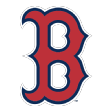 Boston Red Sox: Drew Pomeranz. With David Price seemingly now just a midrotation arm, the Red Sox need Pomeranz to be healthy and build upon his Rich Hill-like, curveball-heavy breakout of 2017 when he was a 3.1 fWAR pitcher.
Boston Red Sox: Drew Pomeranz. With David Price seemingly now just a midrotation arm, the Red Sox need Pomeranz to be healthy and build upon his Rich Hill-like, curveball-heavy breakout of 2017 when he was a 3.1 fWAR pitcher.
 Chicago White Sox: Lucas Giolito. After an encouraging spring, the former first-rounder has been one of the worst pitchers in the game in the first half. His percentage of pitches that have found the strike zone have declined along with his swing-and-miss rate. Giolito must remind the White Sox of his upside in the back half of the season.
Chicago White Sox: Lucas Giolito. After an encouraging spring, the former first-rounder has been one of the worst pitchers in the game in the first half. His percentage of pitches that have found the strike zone have declined along with his swing-and-miss rate. Giolito must remind the White Sox of his upside in the back half of the season.
 Cleveland Indians: Andrew Miller. The Indians have two MVP candidates, Jose Ramirez and Francisco Lindor, and they have a formidable starting rotation. But they have questions in the bullpen, and the biggest is whether they'll have Miller at 100 percent. Premium relief assets figure to be pricey at the deadline. Cleveland needs its relief ace to be right.
Cleveland Indians: Andrew Miller. The Indians have two MVP candidates, Jose Ramirez and Francisco Lindor, and they have a formidable starting rotation. But they have questions in the bullpen, and the biggest is whether they'll have Miller at 100 percent. Premium relief assets figure to be pricey at the deadline. Cleveland needs its relief ace to be right.
 Detroit Tigers: Joe Jimenez. Jimenez probably won't be part of the next relevant Tigers club. But relievers are more and more valuable trade chips, and if he can keep proving his breakout is for real, he could become one of the more attractive assets at the trade deadline.
Detroit Tigers: Joe Jimenez. Jimenez probably won't be part of the next relevant Tigers club. But relievers are more and more valuable trade chips, and if he can keep proving his breakout is for real, he could become one of the more attractive assets at the trade deadline.
 Houston Astros: Josh James. What do you give the team that has everything? How about a dominant pop-up prospect? James was not ranked as a top-100 prospect before the season. But after striking out 15.8 batters per nine innings at Double-A earlier this season (with a 2.49 ERA) and 13.7 per nine in Triple-A (3.42 ERA) thanks to his 98 mph fastball/slider combo, James has emerged as a legit near-ready prospect who could potentially bolster the Astros' bullpen or be in play as a trade chip.
Houston Astros: Josh James. What do you give the team that has everything? How about a dominant pop-up prospect? James was not ranked as a top-100 prospect before the season. But after striking out 15.8 batters per nine innings at Double-A earlier this season (with a 2.49 ERA) and 13.7 per nine in Triple-A (3.42 ERA) thanks to his 98 mph fastball/slider combo, James has emerged as a legit near-ready prospect who could potentially bolster the Astros' bullpen or be in play as a trade chip.
 Kansas City Royals: Danny Duffy. Like the Orioles, the Royals are in a difficult position, as they have a talent deficit at both the major and minor league levels. If he's performing, Duffy could be an important trade asset. The good news? Duffy's raw stuff is still present, and few pitchers have underperformed their fielding-independent marks as much as he has in the first half.
Kansas City Royals: Danny Duffy. Like the Orioles, the Royals are in a difficult position, as they have a talent deficit at both the major and minor league levels. If he's performing, Duffy could be an important trade asset. The good news? Duffy's raw stuff is still present, and few pitchers have underperformed their fielding-independent marks as much as he has in the first half.
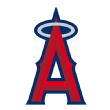 Los Angeles Angels: Shohei Ohtani. While it's unclear how many innings the Angels will get out of Ohtani and his balky right elbow in the second half, Ohtani has returned as a designated hitter, and the Angels need his bat, as they are one of the most right-handed lineups in the game. Ohtani has struggled against lefties, but he has posted a .929 OPS against right-handed pitching through July 8.
Los Angeles Angels: Shohei Ohtani. While it's unclear how many innings the Angels will get out of Ohtani and his balky right elbow in the second half, Ohtani has returned as a designated hitter, and the Angels need his bat, as they are one of the most right-handed lineups in the game. Ohtani has struggled against lefties, but he has posted a .929 OPS against right-handed pitching through July 8.
 Minnesota Twins: Byron Buxton. The Mike Trout comparisons now seem like a lifetime ago. The tools-y Buxton could really be something ... if he could stay healthy and cut down his 30 percent strikeout rate. Few major league players have as much raw speed and power as Buxton. But unless he can make more contact, his athletic gifts will not be maximized. Buxton is increasingly looking like the AL's answer to Billy Hamilton, which is a major blow for a Twins team that already demoted fellow former uber-prospect Miguel Sano to the minors last month. Buxton has an improbably awful minus-3 wRC+ through 94 plate appearances this season.
Minnesota Twins: Byron Buxton. The Mike Trout comparisons now seem like a lifetime ago. The tools-y Buxton could really be something ... if he could stay healthy and cut down his 30 percent strikeout rate. Few major league players have as much raw speed and power as Buxton. But unless he can make more contact, his athletic gifts will not be maximized. Buxton is increasingly looking like the AL's answer to Billy Hamilton, which is a major blow for a Twins team that already demoted fellow former uber-prospect Miguel Sano to the minors last month. Buxton has an improbably awful minus-3 wRC+ through 94 plate appearances this season.
 New York Yankees: Aaron Hicks: Showing his 2017 breakout was no fluke, if Hicks can stay healthy, he could finish as a star-level player for the season and give the Yankees more reason to not court Bryce Harper in free agency. Hicks has shown better command of the strike and better lifting and drive of the ball.
New York Yankees: Aaron Hicks: Showing his 2017 breakout was no fluke, if Hicks can stay healthy, he could finish as a star-level player for the season and give the Yankees more reason to not court Bryce Harper in free agency. Hicks has shown better command of the strike and better lifting and drive of the ball.
 Oakland Athletics: Matt Olson. When he arrived last season, Olson hit like Babe Ruth over 216 plate appearances, slugging .651 with a 162 wRC+. Olson has gone from elite in 2017 to slightly above average in 2018 (118 wRC+). For the Athletics to improve their slim playoff odds (12.3 percent, according to FanGraphs), they need Olson to have another monster second half.
Oakland Athletics: Matt Olson. When he arrived last season, Olson hit like Babe Ruth over 216 plate appearances, slugging .651 with a 162 wRC+. Olson has gone from elite in 2017 to slightly above average in 2018 (118 wRC+). For the Athletics to improve their slim playoff odds (12.3 percent, according to FanGraphs), they need Olson to have another monster second half.
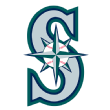 Seattle Mariners: James Paxton. Paxton was dominant on a per-inning basis in 2017, and he has been even better in 2018. But for the Mariners to advance beyond a wild-card game and deeper into October, Paxton will have to do something he has rarely been capable of: stay on the mound for a full season.
Seattle Mariners: James Paxton. Paxton was dominant on a per-inning basis in 2017, and he has been even better in 2018. But for the Mariners to advance beyond a wild-card game and deeper into October, Paxton will have to do something he has rarely been capable of: stay on the mound for a full season.
 Tampa Bay Rays: Wander Franco. The Rays landed Franco, the top international prospect from last year's class, and he has had a fascinating debut. The 17-year-old is OPS'ing .994 in his first 17 Rookie League games. He has jumped into the Baseball America top 100, and in a deepening system, the switch-hitting shortstop has star potential.
Tampa Bay Rays: Wander Franco. The Rays landed Franco, the top international prospect from last year's class, and he has had a fascinating debut. The 17-year-old is OPS'ing .994 in his first 17 Rookie League games. He has jumped into the Baseball America top 100, and in a deepening system, the switch-hitting shortstop has star potential.
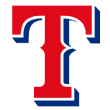 Texas Rangers: Shin-Soo Choo. The Rangers owe Choo more than $40 million. If he can sustain his 2018 surge -- and so far, so good with his on-base streak at 47 games and counting -- perhaps there's a way he becomes more tradable, though the Rangers would still have to pick up a significant portion of his deal.
Texas Rangers: Shin-Soo Choo. The Rangers owe Choo more than $40 million. If he can sustain his 2018 surge -- and so far, so good with his on-base streak at 47 games and counting -- perhaps there's a way he becomes more tradable, though the Rangers would still have to pick up a significant portion of his deal.
 Toronto Blue Jays: Josh Donaldson. The Jays appear to have accepted their fate as noncontenders and sellers at the deadline. With that in mind, what the club could use most is for impending free agent Donaldson to return to health and his former MVP-level production and become a more viable trade chip.
Toronto Blue Jays: Josh Donaldson. The Jays appear to have accepted their fate as noncontenders and sellers at the deadline. With that in mind, what the club could use most is for impending free agent Donaldson to return to health and his former MVP-level production and become a more viable trade chip.
National League
 Arizona Diamondbacks: Robbie Ray. Last year, Ray was a key cog in the D-backs' rotation, worth 3.2 fWAR with an eye-popping 12.1 K/9. This year, when healthy he has pushed that to an even more incredible 13.6 strikeouts per nine, but he missed May and most of June, and he has thrown more than five innings in just three of his nine starts. If the Snakes get last year's Robbie Ray back, watch out.
Arizona Diamondbacks: Robbie Ray. Last year, Ray was a key cog in the D-backs' rotation, worth 3.2 fWAR with an eye-popping 12.1 K/9. This year, when healthy he has pushed that to an even more incredible 13.6 strikeouts per nine, but he missed May and most of June, and he has thrown more than five innings in just three of his nine starts. If the Snakes get last year's Robbie Ray back, watch out.
 Atlanta Braves: Max Fried. What could every contending team use at the deadline? Impact pitching. Even the pitching-rich Dodgers acquired what seemed like a luxury item in Yu Darvish last year. The good news for the Braves is they might not have to overpay to add an impact arm externally. They might have one internally in Fried, the former seventh overall pick. Fried struck out 11 over 6⅔ innings against the Cardinals on July 1 in his second start of the season. The lefty has a plus curveball and three-pitch mix and might be ready to help them in the rotation.
Atlanta Braves: Max Fried. What could every contending team use at the deadline? Impact pitching. Even the pitching-rich Dodgers acquired what seemed like a luxury item in Yu Darvish last year. The good news for the Braves is they might not have to overpay to add an impact arm externally. They might have one internally in Fried, the former seventh overall pick. Fried struck out 11 over 6⅔ innings against the Cardinals on July 1 in his second start of the season. The lefty has a plus curveball and three-pitch mix and might be ready to help them in the rotation.
 Chicago Cubs: Yu Darvish. Having failed to develop their own pitching, the Cubs have had to make sizable commitments in the trade and free-agency markets to acquire it. Darvish has struggled to stay on the mound and perform there when he is healthy. For the Cubs to march deep into October, they need Darvish (and Jose Quintana) to be aces.
Chicago Cubs: Yu Darvish. Having failed to develop their own pitching, the Cubs have had to make sizable commitments in the trade and free-agency markets to acquire it. Darvish has struggled to stay on the mound and perform there when he is healthy. For the Cubs to march deep into October, they need Darvish (and Jose Quintana) to be aces.
 Cincinnati Reds: Tyler Mahle. Developing pitching in a launching pad like the Great American Ballpark is not easy, but Mahle has exceptional command and has shown a growing propensity to miss bats, recording better than a strikeout per inning in his second season in the majors. While he might not ever become an ace, the Reds might have a found a controllable, midrotation arm.
Cincinnati Reds: Tyler Mahle. Developing pitching in a launching pad like the Great American Ballpark is not easy, but Mahle has exceptional command and has shown a growing propensity to miss bats, recording better than a strikeout per inning in his second season in the majors. While he might not ever become an ace, the Reds might have a found a controllable, midrotation arm.
 Colorado Rockies: Jon Gray. Gray was striking out 11 batters per nine innings and walking fewer than three, but a 63.1 strand rate and .386 BABIP fueled his 5.77 ERA and led to a demotion to Triple-A. There is some thought that Gray could better sequence his pitches. He remains talented with top-of-the rotation potential.
Colorado Rockies: Jon Gray. Gray was striking out 11 batters per nine innings and walking fewer than three, but a 63.1 strand rate and .386 BABIP fueled his 5.77 ERA and led to a demotion to Triple-A. There is some thought that Gray could better sequence his pitches. He remains talented with top-of-the rotation potential.
 Los Angeles Dodgers: Clayton Kershaw. While he's back form the DL, his velocity remains down, at a career-low 92 mph. His swinging-strike numbers are down. If Kershaw could get back to "Best Pitcher in the World" status, the Dodgers would be well-positioned for in the second half. The Dodgers at least need him healthy enough to anchor their rotation.
Los Angeles Dodgers: Clayton Kershaw. While he's back form the DL, his velocity remains down, at a career-low 92 mph. His swinging-strike numbers are down. If Kershaw could get back to "Best Pitcher in the World" status, the Dodgers would be well-positioned for in the second half. The Dodgers at least need him healthy enough to anchor their rotation.
 Miami Marlins: J.T. Realmuto. While the Marlins dealt most of their top assets in the offseason, one remains in Realmuto, who has been even better in 2018. He has already posted 3.5 fWAR while hitting .317/.368/.551 so far. He can be a major trade asset at the end of the month or in the winter.
Miami Marlins: J.T. Realmuto. While the Marlins dealt most of their top assets in the offseason, one remains in Realmuto, who has been even better in 2018. He has already posted 3.5 fWAR while hitting .317/.368/.551 so far. He can be a major trade asset at the end of the month or in the winter.
 Milwaukee Brewers: Brad Miller. The Brewers have not struggled in many spots, but their biggest problem areas are in the middle infield, especially shortstop. Once-heralded prospect Orlando Arcia was demoted last month after a dreadful slump, batting just .197 on the season. The Brewers traded for Miller last month; he hasn't played shortstop regularly since 2016, and he is a below-average defender at both positions. But Miller is a league-average bat and could produce a net-positive value for a club that needs every ounce of value it can extract to hold off the Cubs.
Milwaukee Brewers: Brad Miller. The Brewers have not struggled in many spots, but their biggest problem areas are in the middle infield, especially shortstop. Once-heralded prospect Orlando Arcia was demoted last month after a dreadful slump, batting just .197 on the season. The Brewers traded for Miller last month; he hasn't played shortstop regularly since 2016, and he is a below-average defender at both positions. But Miller is a league-average bat and could produce a net-positive value for a club that needs every ounce of value it can extract to hold off the Cubs.
 New York Mets: Jacob deGrom. The Mets probably ought to rebuild, and assuming he's healthy and pitching this well at the deadline, deGrom could net an incredible return. He'll never have more trade value.
New York Mets: Jacob deGrom. The Mets probably ought to rebuild, and assuming he's healthy and pitching this well at the deadline, deGrom could net an incredible return. He'll never have more trade value.
 Philadelphia Phillies: Tommy Hunter. Relief pitching is at a premium in today's game, and few arms have a better chance of second-half improvement than Hunter's. His peripheral numbers are strong, but he produced a 4.85 first-half ERA compared to a first-half FIP of 2.72. Expect better run prevention from Hunter in the second half.
Philadelphia Phillies: Tommy Hunter. Relief pitching is at a premium in today's game, and few arms have a better chance of second-half improvement than Hunter's. His peripheral numbers are strong, but he produced a 4.85 first-half ERA compared to a first-half FIP of 2.72. Expect better run prevention from Hunter in the second half.
 Pittsburgh Pirates: Gregory Polanco. Once rated as the club's top position-player prospect since Andrew McCutchen, Polanco has struggled mightily after an excellent April. He now has 0.0 fWAR on the season and a 96 wRC+ for his career, covering nearly 2,300 plate appearances. It's fair to wonder whether Polanco will ever figure it out or if this is just what he is. The tight-budgeted Pirates need him to figure it out, as he's under contract for $27.5 million guaranteed over the next three seasons.
Pittsburgh Pirates: Gregory Polanco. Once rated as the club's top position-player prospect since Andrew McCutchen, Polanco has struggled mightily after an excellent April. He now has 0.0 fWAR on the season and a 96 wRC+ for his career, covering nearly 2,300 plate appearances. It's fair to wonder whether Polanco will ever figure it out or if this is just what he is. The tight-budgeted Pirates need him to figure it out, as he's under contract for $27.5 million guaranteed over the next three seasons.
 St. Louis Cardinals: Carlos Martinez. Martinez is supposed to be the club's ace, but he's posting a career-high walk percentage (11.9 percent) and his fastball velocity has fallen to a career-low 95.5 mph. His last three starts are encouraging (three walks, 18 K's in 19 IP), but the Cardinals need a better second half out of Martinez to contend for a postseason spot.
St. Louis Cardinals: Carlos Martinez. Martinez is supposed to be the club's ace, but he's posting a career-high walk percentage (11.9 percent) and his fastball velocity has fallen to a career-low 95.5 mph. His last three starts are encouraging (three walks, 18 K's in 19 IP), but the Cardinals need a better second half out of Martinez to contend for a postseason spot.
 San Diego Padres: Chris Paddack. Paddack was not on any top-100-prospect lists this spring, but he has struck out 83 batters against four walks (four!) in 52 ⅓ innings this season at High-A. Paddack has a plus changeup, and he's ready for a Double-A test.
San Diego Padres: Chris Paddack. Paddack was not on any top-100-prospect lists this spring, but he has struck out 83 batters against four walks (four!) in 52 ⅓ innings this season at High-A. Paddack has a plus changeup, and he's ready for a Double-A test.
 San Francisco Giants: Andrew McCutchen. The Giants remain on the fringe of postseason contention despite injuries and inconsistent performances. Madison Bumgarner is back, and the club can hope for more improvement from McCutchen, who has gone through wild slumps and rebounds in recent years. The Giants have to hope he finds his swing in the second half as he did a year ago.
San Francisco Giants: Andrew McCutchen. The Giants remain on the fringe of postseason contention despite injuries and inconsistent performances. Madison Bumgarner is back, and the club can hope for more improvement from McCutchen, who has gone through wild slumps and rebounds in recent years. The Giants have to hope he finds his swing in the second half as he did a year ago.
 Washington Nationals: Bryce Harper. Harper simply hasn't performed like a star. The Nationals' playoff odds have slipped to 60 percent, and they have been the NL's most injured team. But players such as Harper have underperformed, and they need for him to play like the MVP-caliber talent he is while also helping his case in free agency this winter.
Washington Nationals: Bryce Harper. Harper simply hasn't performed like a star. The Nationals' playoff odds have slipped to 60 percent, and they have been the NL's most injured team. But players such as Harper have underperformed, and they need for him to play like the MVP-caliber talent he is while also helping his case in free agency this winter.
American League
 Baltimore Orioles: Austin Hays. The Orioles are on the brink of a long and difficult rebuild with a weak farm system and perhaps the worst major league roster in the game. Moreover, Hays -- their top prospect -- has fallen off multiple top-100-prospects lists after a poor first half and an ankle injury. To accelerate the rebuilding effort, Hays must get back on track.
Baltimore Orioles: Austin Hays. The Orioles are on the brink of a long and difficult rebuild with a weak farm system and perhaps the worst major league roster in the game. Moreover, Hays -- their top prospect -- has fallen off multiple top-100-prospects lists after a poor first half and an ankle injury. To accelerate the rebuilding effort, Hays must get back on track. Boston Red Sox: Drew Pomeranz. With David Price seemingly now just a midrotation arm, the Red Sox need Pomeranz to be healthy and build upon his Rich Hill-like, curveball-heavy breakout of 2017 when he was a 3.1 fWAR pitcher.
Boston Red Sox: Drew Pomeranz. With David Price seemingly now just a midrotation arm, the Red Sox need Pomeranz to be healthy and build upon his Rich Hill-like, curveball-heavy breakout of 2017 when he was a 3.1 fWAR pitcher. Chicago White Sox: Lucas Giolito. After an encouraging spring, the former first-rounder has been one of the worst pitchers in the game in the first half. His percentage of pitches that have found the strike zone have declined along with his swing-and-miss rate. Giolito must remind the White Sox of his upside in the back half of the season.
Chicago White Sox: Lucas Giolito. After an encouraging spring, the former first-rounder has been one of the worst pitchers in the game in the first half. His percentage of pitches that have found the strike zone have declined along with his swing-and-miss rate. Giolito must remind the White Sox of his upside in the back half of the season. Cleveland Indians: Andrew Miller. The Indians have two MVP candidates, Jose Ramirez and Francisco Lindor, and they have a formidable starting rotation. But they have questions in the bullpen, and the biggest is whether they'll have Miller at 100 percent. Premium relief assets figure to be pricey at the deadline. Cleveland needs its relief ace to be right.
Cleveland Indians: Andrew Miller. The Indians have two MVP candidates, Jose Ramirez and Francisco Lindor, and they have a formidable starting rotation. But they have questions in the bullpen, and the biggest is whether they'll have Miller at 100 percent. Premium relief assets figure to be pricey at the deadline. Cleveland needs its relief ace to be right. Detroit Tigers: Joe Jimenez. Jimenez probably won't be part of the next relevant Tigers club. But relievers are more and more valuable trade chips, and if he can keep proving his breakout is for real, he could become one of the more attractive assets at the trade deadline.
Detroit Tigers: Joe Jimenez. Jimenez probably won't be part of the next relevant Tigers club. But relievers are more and more valuable trade chips, and if he can keep proving his breakout is for real, he could become one of the more attractive assets at the trade deadline. Houston Astros: Josh James. What do you give the team that has everything? How about a dominant pop-up prospect? James was not ranked as a top-100 prospect before the season. But after striking out 15.8 batters per nine innings at Double-A earlier this season (with a 2.49 ERA) and 13.7 per nine in Triple-A (3.42 ERA) thanks to his 98 mph fastball/slider combo, James has emerged as a legit near-ready prospect who could potentially bolster the Astros' bullpen or be in play as a trade chip.
Houston Astros: Josh James. What do you give the team that has everything? How about a dominant pop-up prospect? James was not ranked as a top-100 prospect before the season. But after striking out 15.8 batters per nine innings at Double-A earlier this season (with a 2.49 ERA) and 13.7 per nine in Triple-A (3.42 ERA) thanks to his 98 mph fastball/slider combo, James has emerged as a legit near-ready prospect who could potentially bolster the Astros' bullpen or be in play as a trade chip. Kansas City Royals: Danny Duffy. Like the Orioles, the Royals are in a difficult position, as they have a talent deficit at both the major and minor league levels. If he's performing, Duffy could be an important trade asset. The good news? Duffy's raw stuff is still present, and few pitchers have underperformed their fielding-independent marks as much as he has in the first half.
Kansas City Royals: Danny Duffy. Like the Orioles, the Royals are in a difficult position, as they have a talent deficit at both the major and minor league levels. If he's performing, Duffy could be an important trade asset. The good news? Duffy's raw stuff is still present, and few pitchers have underperformed their fielding-independent marks as much as he has in the first half. Los Angeles Angels: Shohei Ohtani. While it's unclear how many innings the Angels will get out of Ohtani and his balky right elbow in the second half, Ohtani has returned as a designated hitter, and the Angels need his bat, as they are one of the most right-handed lineups in the game. Ohtani has struggled against lefties, but he has posted a .929 OPS against right-handed pitching through July 8.
Los Angeles Angels: Shohei Ohtani. While it's unclear how many innings the Angels will get out of Ohtani and his balky right elbow in the second half, Ohtani has returned as a designated hitter, and the Angels need his bat, as they are one of the most right-handed lineups in the game. Ohtani has struggled against lefties, but he has posted a .929 OPS against right-handed pitching through July 8. Minnesota Twins: Byron Buxton. The Mike Trout comparisons now seem like a lifetime ago. The tools-y Buxton could really be something ... if he could stay healthy and cut down his 30 percent strikeout rate. Few major league players have as much raw speed and power as Buxton. But unless he can make more contact, his athletic gifts will not be maximized. Buxton is increasingly looking like the AL's answer to Billy Hamilton, which is a major blow for a Twins team that already demoted fellow former uber-prospect Miguel Sano to the minors last month. Buxton has an improbably awful minus-3 wRC+ through 94 plate appearances this season.
Minnesota Twins: Byron Buxton. The Mike Trout comparisons now seem like a lifetime ago. The tools-y Buxton could really be something ... if he could stay healthy and cut down his 30 percent strikeout rate. Few major league players have as much raw speed and power as Buxton. But unless he can make more contact, his athletic gifts will not be maximized. Buxton is increasingly looking like the AL's answer to Billy Hamilton, which is a major blow for a Twins team that already demoted fellow former uber-prospect Miguel Sano to the minors last month. Buxton has an improbably awful minus-3 wRC+ through 94 plate appearances this season. New York Yankees: Aaron Hicks: Showing his 2017 breakout was no fluke, if Hicks can stay healthy, he could finish as a star-level player for the season and give the Yankees more reason to not court Bryce Harper in free agency. Hicks has shown better command of the strike and better lifting and drive of the ball.
New York Yankees: Aaron Hicks: Showing his 2017 breakout was no fluke, if Hicks can stay healthy, he could finish as a star-level player for the season and give the Yankees more reason to not court Bryce Harper in free agency. Hicks has shown better command of the strike and better lifting and drive of the ball. Oakland Athletics: Matt Olson. When he arrived last season, Olson hit like Babe Ruth over 216 plate appearances, slugging .651 with a 162 wRC+. Olson has gone from elite in 2017 to slightly above average in 2018 (118 wRC+). For the Athletics to improve their slim playoff odds (12.3 percent, according to FanGraphs), they need Olson to have another monster second half.
Oakland Athletics: Matt Olson. When he arrived last season, Olson hit like Babe Ruth over 216 plate appearances, slugging .651 with a 162 wRC+. Olson has gone from elite in 2017 to slightly above average in 2018 (118 wRC+). For the Athletics to improve their slim playoff odds (12.3 percent, according to FanGraphs), they need Olson to have another monster second half. Seattle Mariners: James Paxton. Paxton was dominant on a per-inning basis in 2017, and he has been even better in 2018. But for the Mariners to advance beyond a wild-card game and deeper into October, Paxton will have to do something he has rarely been capable of: stay on the mound for a full season.
Seattle Mariners: James Paxton. Paxton was dominant on a per-inning basis in 2017, and he has been even better in 2018. But for the Mariners to advance beyond a wild-card game and deeper into October, Paxton will have to do something he has rarely been capable of: stay on the mound for a full season. Tampa Bay Rays: Wander Franco. The Rays landed Franco, the top international prospect from last year's class, and he has had a fascinating debut. The 17-year-old is OPS'ing .994 in his first 17 Rookie League games. He has jumped into the Baseball America top 100, and in a deepening system, the switch-hitting shortstop has star potential.
Tampa Bay Rays: Wander Franco. The Rays landed Franco, the top international prospect from last year's class, and he has had a fascinating debut. The 17-year-old is OPS'ing .994 in his first 17 Rookie League games. He has jumped into the Baseball America top 100, and in a deepening system, the switch-hitting shortstop has star potential. Texas Rangers: Shin-Soo Choo. The Rangers owe Choo more than $40 million. If he can sustain his 2018 surge -- and so far, so good with his on-base streak at 47 games and counting -- perhaps there's a way he becomes more tradable, though the Rangers would still have to pick up a significant portion of his deal.
Texas Rangers: Shin-Soo Choo. The Rangers owe Choo more than $40 million. If he can sustain his 2018 surge -- and so far, so good with his on-base streak at 47 games and counting -- perhaps there's a way he becomes more tradable, though the Rangers would still have to pick up a significant portion of his deal. Toronto Blue Jays: Josh Donaldson. The Jays appear to have accepted their fate as noncontenders and sellers at the deadline. With that in mind, what the club could use most is for impending free agent Donaldson to return to health and his former MVP-level production and become a more viable trade chip.
Toronto Blue Jays: Josh Donaldson. The Jays appear to have accepted their fate as noncontenders and sellers at the deadline. With that in mind, what the club could use most is for impending free agent Donaldson to return to health and his former MVP-level production and become a more viable trade chip. Arizona Diamondbacks: Robbie Ray. Last year, Ray was a key cog in the D-backs' rotation, worth 3.2 fWAR with an eye-popping 12.1 K/9. This year, when healthy he has pushed that to an even more incredible 13.6 strikeouts per nine, but he missed May and most of June, and he has thrown more than five innings in just three of his nine starts. If the Snakes get last year's Robbie Ray back, watch out.
Arizona Diamondbacks: Robbie Ray. Last year, Ray was a key cog in the D-backs' rotation, worth 3.2 fWAR with an eye-popping 12.1 K/9. This year, when healthy he has pushed that to an even more incredible 13.6 strikeouts per nine, but he missed May and most of June, and he has thrown more than five innings in just three of his nine starts. If the Snakes get last year's Robbie Ray back, watch out. Atlanta Braves: Max Fried. What could every contending team use at the deadline? Impact pitching. Even the pitching-rich Dodgers acquired what seemed like a luxury item in Yu Darvish last year. The good news for the Braves is they might not have to overpay to add an impact arm externally. They might have one internally in Fried, the former seventh overall pick. Fried struck out 11 over 6⅔ innings against the Cardinals on July 1 in his second start of the season. The lefty has a plus curveball and three-pitch mix and might be ready to help them in the rotation.
Atlanta Braves: Max Fried. What could every contending team use at the deadline? Impact pitching. Even the pitching-rich Dodgers acquired what seemed like a luxury item in Yu Darvish last year. The good news for the Braves is they might not have to overpay to add an impact arm externally. They might have one internally in Fried, the former seventh overall pick. Fried struck out 11 over 6⅔ innings against the Cardinals on July 1 in his second start of the season. The lefty has a plus curveball and three-pitch mix and might be ready to help them in the rotation. Chicago Cubs: Yu Darvish. Having failed to develop their own pitching, the Cubs have had to make sizable commitments in the trade and free-agency markets to acquire it. Darvish has struggled to stay on the mound and perform there when he is healthy. For the Cubs to march deep into October, they need Darvish (and Jose Quintana) to be aces.
Chicago Cubs: Yu Darvish. Having failed to develop their own pitching, the Cubs have had to make sizable commitments in the trade and free-agency markets to acquire it. Darvish has struggled to stay on the mound and perform there when he is healthy. For the Cubs to march deep into October, they need Darvish (and Jose Quintana) to be aces. Cincinnati Reds: Tyler Mahle. Developing pitching in a launching pad like the Great American Ballpark is not easy, but Mahle has exceptional command and has shown a growing propensity to miss bats, recording better than a strikeout per inning in his second season in the majors. While he might not ever become an ace, the Reds might have a found a controllable, midrotation arm.
Cincinnati Reds: Tyler Mahle. Developing pitching in a launching pad like the Great American Ballpark is not easy, but Mahle has exceptional command and has shown a growing propensity to miss bats, recording better than a strikeout per inning in his second season in the majors. While he might not ever become an ace, the Reds might have a found a controllable, midrotation arm. Colorado Rockies: Jon Gray. Gray was striking out 11 batters per nine innings and walking fewer than three, but a 63.1 strand rate and .386 BABIP fueled his 5.77 ERA and led to a demotion to Triple-A. There is some thought that Gray could better sequence his pitches. He remains talented with top-of-the rotation potential.
Colorado Rockies: Jon Gray. Gray was striking out 11 batters per nine innings and walking fewer than three, but a 63.1 strand rate and .386 BABIP fueled his 5.77 ERA and led to a demotion to Triple-A. There is some thought that Gray could better sequence his pitches. He remains talented with top-of-the rotation potential. Los Angeles Dodgers: Clayton Kershaw. While he's back form the DL, his velocity remains down, at a career-low 92 mph. His swinging-strike numbers are down. If Kershaw could get back to "Best Pitcher in the World" status, the Dodgers would be well-positioned for in the second half. The Dodgers at least need him healthy enough to anchor their rotation.
Los Angeles Dodgers: Clayton Kershaw. While he's back form the DL, his velocity remains down, at a career-low 92 mph. His swinging-strike numbers are down. If Kershaw could get back to "Best Pitcher in the World" status, the Dodgers would be well-positioned for in the second half. The Dodgers at least need him healthy enough to anchor their rotation. Miami Marlins: J.T. Realmuto. While the Marlins dealt most of their top assets in the offseason, one remains in Realmuto, who has been even better in 2018. He has already posted 3.5 fWAR while hitting .317/.368/.551 so far. He can be a major trade asset at the end of the month or in the winter.
Miami Marlins: J.T. Realmuto. While the Marlins dealt most of their top assets in the offseason, one remains in Realmuto, who has been even better in 2018. He has already posted 3.5 fWAR while hitting .317/.368/.551 so far. He can be a major trade asset at the end of the month or in the winter. Milwaukee Brewers: Brad Miller. The Brewers have not struggled in many spots, but their biggest problem areas are in the middle infield, especially shortstop. Once-heralded prospect Orlando Arcia was demoted last month after a dreadful slump, batting just .197 on the season. The Brewers traded for Miller last month; he hasn't played shortstop regularly since 2016, and he is a below-average defender at both positions. But Miller is a league-average bat and could produce a net-positive value for a club that needs every ounce of value it can extract to hold off the Cubs.
Milwaukee Brewers: Brad Miller. The Brewers have not struggled in many spots, but their biggest problem areas are in the middle infield, especially shortstop. Once-heralded prospect Orlando Arcia was demoted last month after a dreadful slump, batting just .197 on the season. The Brewers traded for Miller last month; he hasn't played shortstop regularly since 2016, and he is a below-average defender at both positions. But Miller is a league-average bat and could produce a net-positive value for a club that needs every ounce of value it can extract to hold off the Cubs. New York Mets: Jacob deGrom. The Mets probably ought to rebuild, and assuming he's healthy and pitching this well at the deadline, deGrom could net an incredible return. He'll never have more trade value.
New York Mets: Jacob deGrom. The Mets probably ought to rebuild, and assuming he's healthy and pitching this well at the deadline, deGrom could net an incredible return. He'll never have more trade value. Philadelphia Phillies: Tommy Hunter. Relief pitching is at a premium in today's game, and few arms have a better chance of second-half improvement than Hunter's. His peripheral numbers are strong, but he produced a 4.85 first-half ERA compared to a first-half FIP of 2.72. Expect better run prevention from Hunter in the second half.
Philadelphia Phillies: Tommy Hunter. Relief pitching is at a premium in today's game, and few arms have a better chance of second-half improvement than Hunter's. His peripheral numbers are strong, but he produced a 4.85 first-half ERA compared to a first-half FIP of 2.72. Expect better run prevention from Hunter in the second half. Pittsburgh Pirates: Gregory Polanco. Once rated as the club's top position-player prospect since Andrew McCutchen, Polanco has struggled mightily after an excellent April. He now has 0.0 fWAR on the season and a 96 wRC+ for his career, covering nearly 2,300 plate appearances. It's fair to wonder whether Polanco will ever figure it out or if this is just what he is. The tight-budgeted Pirates need him to figure it out, as he's under contract for $27.5 million guaranteed over the next three seasons.
Pittsburgh Pirates: Gregory Polanco. Once rated as the club's top position-player prospect since Andrew McCutchen, Polanco has struggled mightily after an excellent April. He now has 0.0 fWAR on the season and a 96 wRC+ for his career, covering nearly 2,300 plate appearances. It's fair to wonder whether Polanco will ever figure it out or if this is just what he is. The tight-budgeted Pirates need him to figure it out, as he's under contract for $27.5 million guaranteed over the next three seasons. St. Louis Cardinals: Carlos Martinez. Martinez is supposed to be the club's ace, but he's posting a career-high walk percentage (11.9 percent) and his fastball velocity has fallen to a career-low 95.5 mph. His last three starts are encouraging (three walks, 18 K's in 19 IP), but the Cardinals need a better second half out of Martinez to contend for a postseason spot.
St. Louis Cardinals: Carlos Martinez. Martinez is supposed to be the club's ace, but he's posting a career-high walk percentage (11.9 percent) and his fastball velocity has fallen to a career-low 95.5 mph. His last three starts are encouraging (three walks, 18 K's in 19 IP), but the Cardinals need a better second half out of Martinez to contend for a postseason spot. San Diego Padres: Chris Paddack. Paddack was not on any top-100-prospect lists this spring, but he has struck out 83 batters against four walks (four!) in 52 ⅓ innings this season at High-A. Paddack has a plus changeup, and he's ready for a Double-A test.
San Diego Padres: Chris Paddack. Paddack was not on any top-100-prospect lists this spring, but he has struck out 83 batters against four walks (four!) in 52 ⅓ innings this season at High-A. Paddack has a plus changeup, and he's ready for a Double-A test. San Francisco Giants: Andrew McCutchen. The Giants remain on the fringe of postseason contention despite injuries and inconsistent performances. Madison Bumgarner is back, and the club can hope for more improvement from McCutchen, who has gone through wild slumps and rebounds in recent years. The Giants have to hope he finds his swing in the second half as he did a year ago.
San Francisco Giants: Andrew McCutchen. The Giants remain on the fringe of postseason contention despite injuries and inconsistent performances. Madison Bumgarner is back, and the club can hope for more improvement from McCutchen, who has gone through wild slumps and rebounds in recent years. The Giants have to hope he finds his swing in the second half as he did a year ago. Washington Nationals: Bryce Harper. Harper simply hasn't performed like a star. The Nationals' playoff odds have slipped to 60 percent, and they have been the NL's most injured team. But players such as Harper have underperformed, and they need for him to play like the MVP-caliber talent he is while also helping his case in free agency this winter.
Washington Nationals: Bryce Harper. Harper simply hasn't performed like a star. The Nationals' playoff odds have slipped to 60 percent, and they have been the NL's most injured team. But players such as Harper have underperformed, and they need for him to play like the MVP-caliber talent he is while also helping his case in free agency this winter.